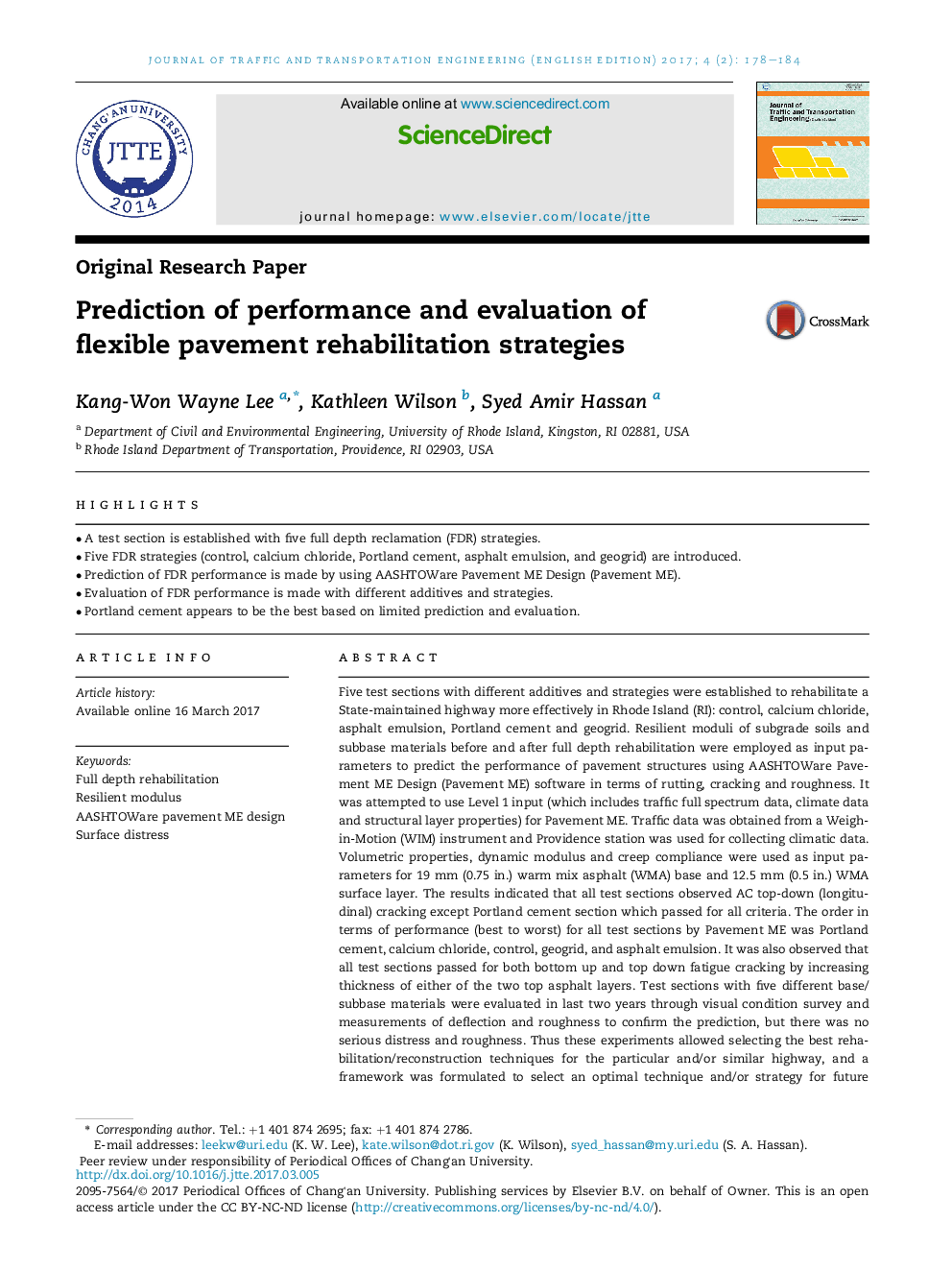| کد مقاله | کد نشریه | سال انتشار | مقاله انگلیسی | نسخه تمام متن |
|---|---|---|---|---|
| 4924686 | 1363105 | 2017 | 7 صفحه PDF | دانلود رایگان |
- A test section is established with five full depth reclamation (FDR) strategies.
- Five FDR strategies (control, calcium chloride, Portland cement, asphalt emulsion, and geogrid) are introduced.
- Prediction of FDR performance is made by using AASHTOWare Pavement ME Design (Pavement ME).
- Evaluation of FDR performance is made with different additives and strategies.
- Portland cement appears to be the best based on limited prediction and evaluation.
Five test sections with different additives and strategies were established to rehabilitate a State-maintained highway more effectively in Rhode Island (RI): control, calcium chloride, asphalt emulsion, Portland cement and geogrid. Resilient moduli of subgrade soils and subbase materials before and after full depth rehabilitation were employed as input parameters to predict the performance of pavement structures using AASHTOWare Pavement ME Design (Pavement ME) software in terms of rutting, cracking and roughness. It was attempted to use Level 1 input (which includes traffic full spectrum data, climate data and structural layer properties) for Pavement ME. Traffic data was obtained from a Weigh-in-Motion (WIM) instrument and Providence station was used for collecting climatic data. Volumetric properties, dynamic modulus and creep compliance were used as input parameters for 19Â mm (0.75 in.) warm mix asphalt (WMA) base and 12.5Â mm (0.5 in.) WMA surface layer. The results indicated that all test sections observed AC top-down (longitudinal) cracking except Portland cement section which passed for all criteria. The order in terms of performance (best to worst) for all test sections by Pavement ME was Portland cement, calcium chloride, control, geogrid, and asphalt emulsion. It was also observed that all test sections passed for both bottom up and top down fatigue cracking by increasing thickness of either of the two top asphalt layers. Test sections with five different base/subbase materials were evaluated in last two years through visual condition survey and measurements of deflection and roughness to confirm the prediction, but there was no serious distress and roughness. Thus these experiments allowed selecting the best rehabilitation/reconstruction techniques for the particular and/or similar highway, and a framework was formulated to select an optimal technique and/or strategy for future rehabilitation/reconstruction projects. Finally, guidelines for long-term evaluation were developed to verify short-term prediction and performance.
Journal: Journal of Traffic and Transportation Engineering (English Edition) - Volume 4, Issue 2, April 2017, Pages 178-184
